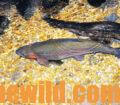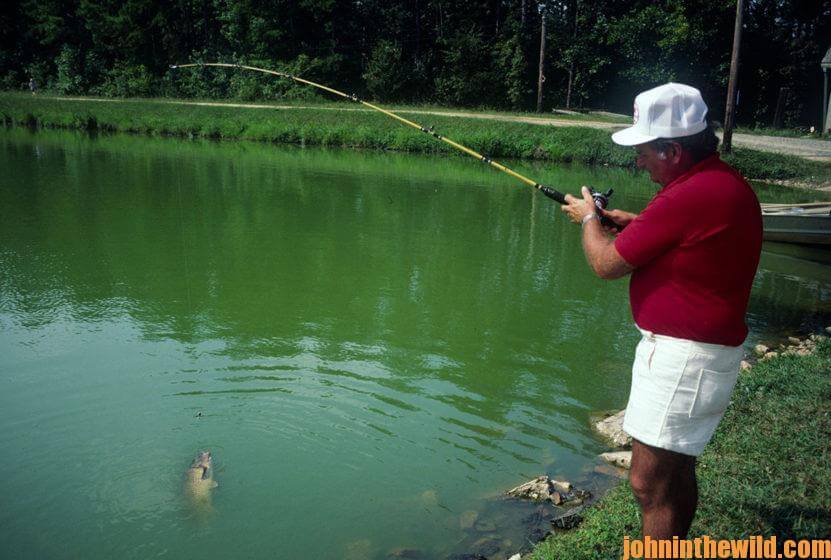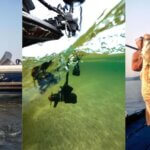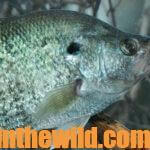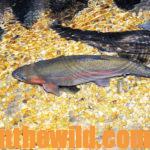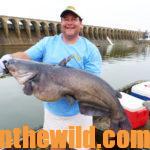Editor’s Note: Sure, fishing is fun – being out on the water, relaxing and enjoying your surroundings. But catching something is even better. Here’s a rundown of summertime fish to fish for and the techniques for catching them. Fishing is more fun when your pole is bent. When I go fishing, I like to catch something. Of course, I enjoy a sunrise, birds singing and beholding the beauty of God’s creations. However, I don’t have to get up at 4:00 am, drive 50 miles and get sunburned to do that. When I put a bait in the water, it is with the firm resolve that at any instant I will be waging war with some kind of fish. I’m not an angling purist. I prefer a bent rod to smelling the roses or taking only one species of fish. Even when I go bass fishing. I often will take along a few jugs for cats, a bucket of minnows for crappie, some worms for bream and a fly rod with a popping bug that will catch anything that swims and an ultralight rod rig with a jig to be ready if I see a school of white bass surfacing. This week we’re looking at ways to put fish in your ice chest.
 Not all fish have to be edible to be fun to catch. Some fish are fun to catch because they are big or fight hard, and others are fun angling because you can catch plenty of the fish. The carp is fun to catch for all three reasons. Although carp fishing isn’t that popular in the U.S., it is in the U.K., Europe, Asia and the Middle East.
Not all fish have to be edible to be fun to catch. Some fish are fun to catch because they are big or fight hard, and others are fun angling because you can catch plenty of the fish. The carp is fun to catch for all three reasons. Although carp fishing isn’t that popular in the U.S., it is in the U.K., Europe, Asia and the Middle East.
One of the nation’s leading carp anglers was my friend the late Jerry Ryan of Stanley, North Carolina. One of the earliest B.A.S.S. anglers, Jerry grew up on a farm and was at one time what many might call a survival carp fisherman. “You see, when I was growing up, boys did whatever they could do to make money. Now I’d rather bass fish than anything. But at that time, bass fishing didn’t pay anything. When I was 16-years old, somebody started a fad of holding carp-fishing tournaments in farm ponds around Gaston County, North Carolina. These tournaments paid money for carp fishing. So, I left the bass alone and went to catching carp.
“The carp tournaments were quite unique. A 5-20 acre pond would be stocked with carp from 5-10 pounds in size. Sometimes the organizers would put a few larger carp in the lake. Then anglers paid $5 to $10 each to fish. The more people fishing these carp ponds, the more prize money that was awarded for the biggest carp caught. I soon figured out that if I learned how to carp fish really good, I could pay my $5 and go home with several hundred dollars in prize money. So, to win the tournaments, I developed special carp baits.”
In the next three or four years, Jerry’s carp-fishing techniques and secret baits won him $12,000 to $20,000.
“I used basically two baits to catch carp,” Ryan mentions. One was made-up of bran, cooked rice and molasses. After forming this mixture into a bait, I used this bait to draw in the carp. Then I utilized my very, very special bait. I’ve been offered hundreds of dollars for this recipe, but I never have given it out until now. This is my sweet-potato bait.”
Sweet Potato Carp Bait:
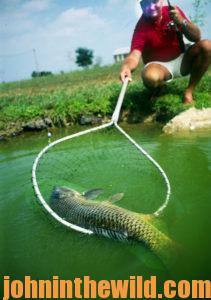 Ryan cooked sweet potatoes, pineapple juice, cornmeal and flour all together until this mixture was thick and hard enough to roll into a bait. He learned carp couldn’t resist that bait! Although Ryan no longer fished for carp competitively, he and his family still fished that sweet-potato bait for the pure fun of catching some of the giant river carp.
Ryan cooked sweet potatoes, pineapple juice, cornmeal and flour all together until this mixture was thick and hard enough to roll into a bait. He learned carp couldn’t resist that bait! Although Ryan no longer fished for carp competitively, he and his family still fished that sweet-potato bait for the pure fun of catching some of the giant river carp.
Carp and Catfish-Hole Baiting Recipe:
Here are Jerry’s suggestions for baiting a hole for carp. Try this recipe, and you’ll have plenty of fun this summer catching giant golden sides. This recipe can be used to lure catfish into a hole.
Ingredients: Uncooked rice, cooked rice, dry dogfood or catfish chow, and two cans of moist dogfood.
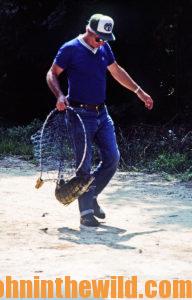 Preparation: Place all of these ingredients in either a potato sack or an onion sack with small mesh holes. Start by putting in the two cans of moist dogfood, and then add two medium-size rocks or one regular-size brick to insure that the sack will stay on the bottom of the body of water. Next, pour in the cooked rice and then the uncooked rice. Sink the sack full of these ingredients into the place where you plan to fish. Wait two days for the bait to swell-up. Many times, the sack will burst, and the insides will spread out over the bottom. By the third day, after placing the sack in an area, carp and catfish will move into the hole and begin to root-around and feed on the bait.
Preparation: Place all of these ingredients in either a potato sack or an onion sack with small mesh holes. Start by putting in the two cans of moist dogfood, and then add two medium-size rocks or one regular-size brick to insure that the sack will stay on the bottom of the body of water. Next, pour in the cooked rice and then the uncooked rice. Sink the sack full of these ingredients into the place where you plan to fish. Wait two days for the bait to swell-up. Many times, the sack will burst, and the insides will spread out over the bottom. By the third day, after placing the sack in an area, carp and catfish will move into the hole and begin to root-around and feed on the bait.
On the third day, make up a bait of rice, molasses and bran. You just have to experiment until you get the bait thick enough to put on a hook. Then, using this, cast with little or no weight to the hole you have baited and hold on!
“Most of the time, the carp and cats you catch will have bellies that are bloated from eating all that bait on the bottom,” Ryan told me.
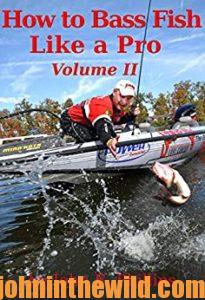 To learn more about bass fishing, check out John E. Phillips’ book, “How to Bass Fish Like a Pro, Volume II,” available in Kindle, print and Audible at https://amzn.to/3kb0QI6. You may have to copy this click to the book into your browser. Notice on the left-hand side where it says you can read or listen to 10% of the book for free.
To learn more about bass fishing, check out John E. Phillips’ book, “How to Bass Fish Like a Pro, Volume II,” available in Kindle, print and Audible at https://amzn.to/3kb0QI6. You may have to copy this click to the book into your browser. Notice on the left-hand side where it says you can read or listen to 10% of the book for free.


